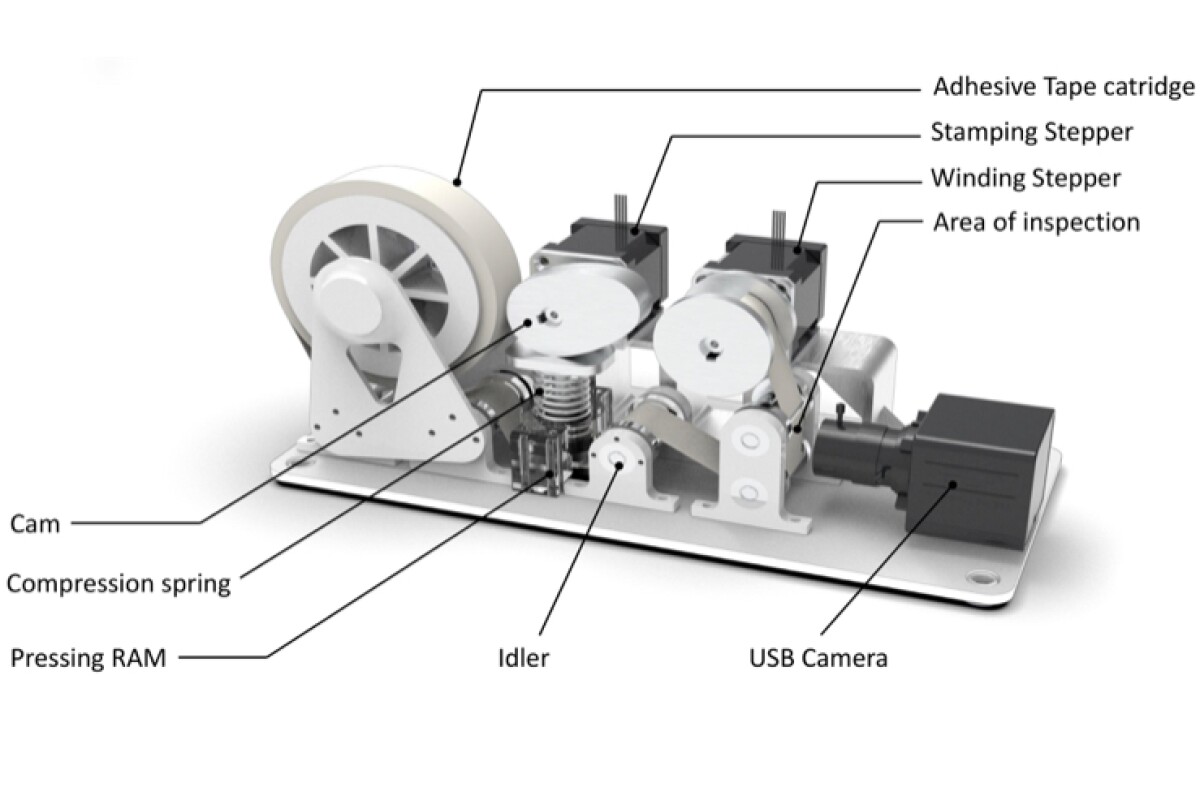Fridays for Future, the grassroots climate movement, held its first global in-person strike since the pandemic on September 24.
By Anna Iovine on September 25, 2021

Greta Thunberg and other demonstrators during Fridays for Future on September 24, 2021 in Berlin, Germany. Credit: Florian Gaertner/Photothek Via Getty Images
On Friday, grassroots climate movement Fridays for Future led its first global strike since the pandemic hit: #UprootTheSystem, a name and hashtag meant to bring about an intersectional discussion about climate change.
Fridays for Future began in 2018 when then-15-year-old Greta Thunberg began a school strike for climate. Thunberg's protest quickly sparked a global movement, and — fast forward to yesterday — Uproot the System was worldwide, with estimated 1,400 events in over 80 countries.
Uproot the System encourages all of us to center MAPA, or "most affected people and areas." This includes indigenous people and regions labeled the "Global South" (parts of Africa, Latin America, Asia, and Oceania).
"Without listening to MAPA, embracing intersectionality, and uprooting this system," warned Fridays for Future in their Uproot The System blog post, "we have no hope of stopping the climate crisis."
Thousands of young people around the globe met the call on Friday. Thunberg herself attended the Berlin protest. Here are photos from the international strike:

People during Fridays for Future demonstration in Rome, Italy. Credit: Andrea Ronchini/NurPhoto Via Getty Images

Children in London, United Kingdom for Fridays for Future. Credit: Mark Kerrison/In Pictures Via Getty Images

Activists in Utrecht, Netherlands dressed like politicians are seen setting fire on a circle representing mother Earth during the demonstration. Credit: Ana Fernandez/SOPA Images/LightRocket Via Getty Images

A protester makes a gesture during the demonstration in Warsaw, Poland. Credit: Attila Husejnow/SOPA Images/LightRocket

Participants seen holding a banner at the protest in New York, New York. Credit: Erik McGregor/LightRocket Via Getty Images
VUB led Science publication shows how climate change is disproportionally affecting children
The kids aren’t alright
Peer-Reviewed PublicationInternational research led by Prof. Wim Thiery of the VUB research group BCLIMATE shows that children are to face disproportionate increases in lifetime extreme event exposure – especially in low-income countries. Under current climate policy, newborns across the globe will on average face seven times more scorching heatwaves during their lives than their grandparents. In addition, they will on average live through 2.6 times more droughts, 2.8 times as many river floods, almost three times as many crop failures, and twice the number of wildfires as people born 60 years ago.
“Our results highlight a severe threat to the safety of young generations and call for drastic emission reductions to safeguard their future.” says Thiery, climate scientist at VUB and lead author of the study.
The Fridays for Future movement led by the world’s youth has drastically increased awareness around the importance of climate change mitigation for future generations. Next to school strikes and protest marches, young people are now also suing their governments, for instance for violating their fundamental rights under the United Nations Committee on the Rights of the Child.
First study to bridge climate science and demography
Scientifically, aspects of climate change like droughts or heatwaves are often studied by comparing different time windows or discrete levels of warming. However, this ruling paradigm in climate and impact research has so far not quantified how younger generations will experience a different climate change burden. Current research therefore insufficiently grasps how the climate change burden differs across generations and countries.
Bridging between climate science and demography, the international research team now for the first time quantified lifetime exposure to droughts, heatwaves, crop failures, river floods, tropical cyclones, and wildfires. They computed lifetime exposure for every generation born between 1960 and 2020, and this for every country in the world and for every global warming scenario between today’s 1°C and 3.5°C above pre-industrial. To this end, the team generated an unprecedented collection of climate change impact simulations and combined these with future global temperature trajectories and demographic information on life expectancy, population density, and cohort size.
The results show that for a 3°C global warming pathway, a 6-year old in 2020 will experience twice as many wildfires and tropical cyclones, 3 times more river floods, 4 times more crop failures, 5 times more droughts, and 36 times more heatwaves relative to a reference person living under pre-industrial climate conditions. Under a 3.5°C warming scenario, children born in 2020 will even experience 44 times more heatwaves.
At and above 1.5°C of warming, lifetime exposure to heatwaves, crop failures, droughts, and river floods for people born after 1980 is unmatched by pre-industrial climate conditions.
“This basically means that people younger than 40 today will live an unprecedented life even under the most stringent climate change mitigation scenarios”, says Thiery.
Regional differences
Behind these global numbers hide important regional variations. Young generations in low-income countries will face by far the strongest increases with a more than fivefold increase in overall lifetime extreme event exposure. While 53 million children born in Europe and Central Asia since 2016 will experience about four times more extreme events under current pledges, 172 million children of the same age in sub-Saharan Africa face an almost sixfold increase in lifetime extreme event exposure, and even 50 times more heatwaves.
“The combined rapid growth in population and lifetime extreme event exposure highlights a disproportionate climate change burden for young generations in the Global South”, adds Thiery. “And we even have strong reasons to think that our calculations underestimate the actual increases that young people will face”.
Youth summit and COP26
With the UNFCCC Youth Summit running from 28 – 30 September in Milan and with COP26 upcoming in Glasgow end of October, international climate negotiations are gaining critical momentum.
“Limiting global warming to 1.5°C instead of following current policy pledges substantially reduces the intergenerational burden for extreme heatwaves, wildfires, crop failures, droughts, tropical cyclones, and river floods,” says Prof. Joeri Rogelj, climate change expert at Imperial College London and co-author of the study. “The results of the study published in Science and the accompanying report curated by the NGO Save The Children therefore highlight the utmost need to ramp up ambitions and embark on immediate action.”
“Our results underline the sheer importance of the Paris Agreement to protect young generations around the world,” adds Thiery. “If we manage to drastically reduce our emissions in the coming years, we can still avoid the worst consequences for children worldwide. At the same time, a sobering message for the youth in low-income countries emerges, where incredibly challenging extreme events are robustly projected, even under the most stringent of climate action futures.”
Contact
Wim Thiery
+32 485 70 80 18
Notes to editors
Link to Science paper: www.science.org/doi/10.1126/science.abi7339
Link to Save The Children Report: https://resourcecentre.savethechildren.net/library/born-climate-crisis-why-we-must-act-now-secure-childrens-rights
The study was accomplished by researchers from Vrije Universiteit Brussel (VUB), ETH Zurich, Potsdam Institute for Climate Impact Research (PIK), Imperial College London, International Institute for Applied Systems Analysis (IIASA), Climate Analytics, Humboldt University, Massachusetts Institute of Technology, Deutscher Wetterdienst (DWD), MeteoSwiss, East China Normal University, Zhejiang University, Institut Pierre Simon Laplace (IPSL), The Cyprus Institute, University of Liège, Foundation for Research and Technology Hellas, University of Nottingham, National Institute for Environmental Studies Japan, Goethe University Frankfurt, Senckenberg Biodiversity and Climate Research Centre (SBiK-F), Universidad Pablo de Olavide, NASA Goddard Institute for Space Studies, Columbia University, Technical University of Crete, China Agricultural University, University of Vienna, Zhejiang University, and Helmholtz-Zentrum Hereon.










